Call us directly: (623) 328-8577
18731 N. Reems Road, Suite 640
Surprise, AZ 85374
View Location
Follow us on Facebook ![]()
July 2018
What Causes Plantar Hyperhidrosis?
 If you are experiencing excessive sweating of the feet, you may have an uncomfortable condition that is referred to as plantar hyperhidrosis. Research has shown that a cause for this ailment to occur may be a nervous system that is overactive. Other foot conditions may develop as a result of plantar hyperhidrosis, and these may include the formation of painful blisters and athlete’s foot, in addition to a foul odor coming from the feet. It may be hazardous to perform any type of martial arts, exercise, or dance routine, which may possibly cause wet spots to form on the mats, that are typically used. It may cause falling to occur easily, which may lead to serious injuries. Please schedule a consultation with a podiatrist if you are afflicted with plantar hyperhidrosis of the feet and would like additional information.
If you are experiencing excessive sweating of the feet, you may have an uncomfortable condition that is referred to as plantar hyperhidrosis. Research has shown that a cause for this ailment to occur may be a nervous system that is overactive. Other foot conditions may develop as a result of plantar hyperhidrosis, and these may include the formation of painful blisters and athlete’s foot, in addition to a foul odor coming from the feet. It may be hazardous to perform any type of martial arts, exercise, or dance routine, which may possibly cause wet spots to form on the mats, that are typically used. It may cause falling to occur easily, which may lead to serious injuries. Please schedule a consultation with a podiatrist if you are afflicted with plantar hyperhidrosis of the feet and would like additional information.
If you are suffering from hyperhidrosis contact Dr. David K. Lee of Arches Foot Institute. Our doctor can provide the care you need to attend to all of your foot and ankle needs.
Hyperhidrosis of the Feet
Hyperhidrosis is a rare disorder that can cause people to have excessive sweating of their feet. This can usually occur all on its own without rigorous activity involved. People who suffer from hyperhidrosis may also experience sweaty palms.
Although it is said that sweating is a healthy process meant to cool down the body temperature and to maintain a proper internal temperature, hyperhidrosis may prove to be a huge hindrance on a person’s everyday life.
Plantar hyperhidrosis is considered to be the main form of hyperhidrosis. Secondary hyperhidrosis can refer to sweating that occurs in areas other than the feet or hands and armpits. Often this may be a sign of it being related to another medical condition such as menopause, hyperthyroidism and even Parkinson’s disease.
In order to alleviate this condition, it is important to see your doctor so that they may prescribe the necessary medications so that you can begin to live a normal life again. If this is left untreated, it is said that it will persist throughout an individual’s life.
A last resort approach would be surgery, but it is best to speak with your doctor to find out what may be the best treatment for you.
If you have any questions please feel free to contact our office located in Surprise, AZ. We offer the newest diagnostic and treatment technologies for all your foot and ankle needs.
Read more about Hyperhidrosis of the FeetHow to Protect Your Feet During the Summer
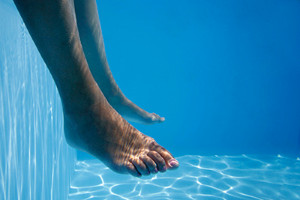 During the summer months, you may be involved in many different types of activities. Consequently, you should ensure you are wearing the best footwear possible to take care of your feet no matter where you go. If you plan on going to the beach, flip flops may be the most obvious choice of footwear to protect your feet. However, you should be careful not to wear flip-flops for too long. Although they can protect your feet from sharp objects on the ground, they can also be responsible for injuries such as ankle sprains. If you decide to go into the ocean after walking around on a sandy beach, it is recommended that you wear a pair of aqua socks to shield your feet from fragments and rocks. Another place that you may find yourself at in the warmer months is a water park. Water-friendly sandals are recommended for water parks because they can protect your feet from developing athlete’s foot and other fungal infections. Athlete’s foot is a contagious fungal infection that can easily be spread by walking on contaminated floors.
During the summer months, you may be involved in many different types of activities. Consequently, you should ensure you are wearing the best footwear possible to take care of your feet no matter where you go. If you plan on going to the beach, flip flops may be the most obvious choice of footwear to protect your feet. However, you should be careful not to wear flip-flops for too long. Although they can protect your feet from sharp objects on the ground, they can also be responsible for injuries such as ankle sprains. If you decide to go into the ocean after walking around on a sandy beach, it is recommended that you wear a pair of aqua socks to shield your feet from fragments and rocks. Another place that you may find yourself at in the warmer months is a water park. Water-friendly sandals are recommended for water parks because they can protect your feet from developing athlete’s foot and other fungal infections. Athlete’s foot is a contagious fungal infection that can easily be spread by walking on contaminated floors.
Everyday foot care is very important to prevent infection and other foot ailments. If you need your feet checked, contact Dr. David K. Lee from Arches Foot Institute. Our doctor can provide the care you need to keep you pain-free and on your feet.
Everyday Foot Care
Often, people take care of their bodies, face and hair more so than they do for their feet. But the feet are a very important aspect of our bodies, and one that we should pay more attention to. Without our feet, we would not be able to perform most daily tasks.
It is best to check your feet regularly to make sure there are no new bruises or cuts that you may not have noticed before. For dry feet, moisturizer can easily be a remedy and can be applied as often as necessary to the affected areas. Wearing shoes that fit well can also help you maintain good foot health, as well as making it easier to walk and do daily activities without the stress or pain of ill-fitting shoes, high heels, or even flip flops. Wearing clean socks with closed shoes is important to ensure that sweat and bacteria do not accumulate within the shoe. Clean socks help to prevent Athlete’s foot, fungi problems, bad odors, and can absorb sweat.
If you have any questions please feel free to contact our office located in Surprise, AZ. We offer the newest diagnostic and treatment technologies for all your foot and ankle needs.
Read more about Every Day Foot CareCauses of Bunions
 If the joint on the bottom of the big toe is enlarged, this foot condition may be referred to as a bunion. There may be considerable inflammation, which can possibly lead to additional bone growth. Patients who experience bunions often have obvious symptoms including pain, redness and tenderness. If this condition is not treated promptly, arthritis may develop, and this may possibly cause a deformity. Common reasons for bunions to form may be from genetic traits or abnormal foot structures such as flat feet. Choosing to wear poorly fitting shoes may cause a preexisting case of bunions to become even worse. It’s important to speak with a podiatrist who can suggest specific exercises that may treat the symptoms of the bunion in addition to possible removal, which may require surgery.
If the joint on the bottom of the big toe is enlarged, this foot condition may be referred to as a bunion. There may be considerable inflammation, which can possibly lead to additional bone growth. Patients who experience bunions often have obvious symptoms including pain, redness and tenderness. If this condition is not treated promptly, arthritis may develop, and this may possibly cause a deformity. Common reasons for bunions to form may be from genetic traits or abnormal foot structures such as flat feet. Choosing to wear poorly fitting shoes may cause a preexisting case of bunions to become even worse. It’s important to speak with a podiatrist who can suggest specific exercises that may treat the symptoms of the bunion in addition to possible removal, which may require surgery.
If you are suffering from bunions, contact Dr. David K. Lee of Arches Foot Institute. Our doctor can provide the care you need to keep you pain-free and on your feet.
What Is a Bunion?
A bunion is formed of swollen tissue or an enlargement of boney growth, usually located at the base joint of the toe that connects to the foot. The swelling occurs due to the bones in the big toe shifting inward, which impacts the other toes of the foot. This causes the area around the base of the big toe to become inflamed and painful.
Why Do Bunions Form?
Genetics – Susceptibility to bunions are often hereditary
Stress on the feet – Poorly fitted and uncomfortable footwear that places stress on feet, such as heels, can worsen existing bunions
How Are Bunions Diagnosed?
Doctors often perform two tests – blood tests and x-rays – when trying to diagnose bunions, especially in the early stages of development. Blood tests help determine if the foot pain is being caused by something else, such as arthritis, while x-rays provide a clear picture of your bone structure to your doctor.
How Are Bunions Treated?
- Refrain from wearing heels or similar shoes that cause discomfort
- Select wider shoes that can provide more comfort and reduce pain
- Anti-inflammatory and pain management drugs
- Orthotics or foot inserts
- Surgery
If you have any questions, please feel free to contact our office located in Surprise, AZ. We offer the newest diagnostic and treatment technologies for all your foot care needs.
Read more about BunionsPossible Treatments Options for a Broken Ankle
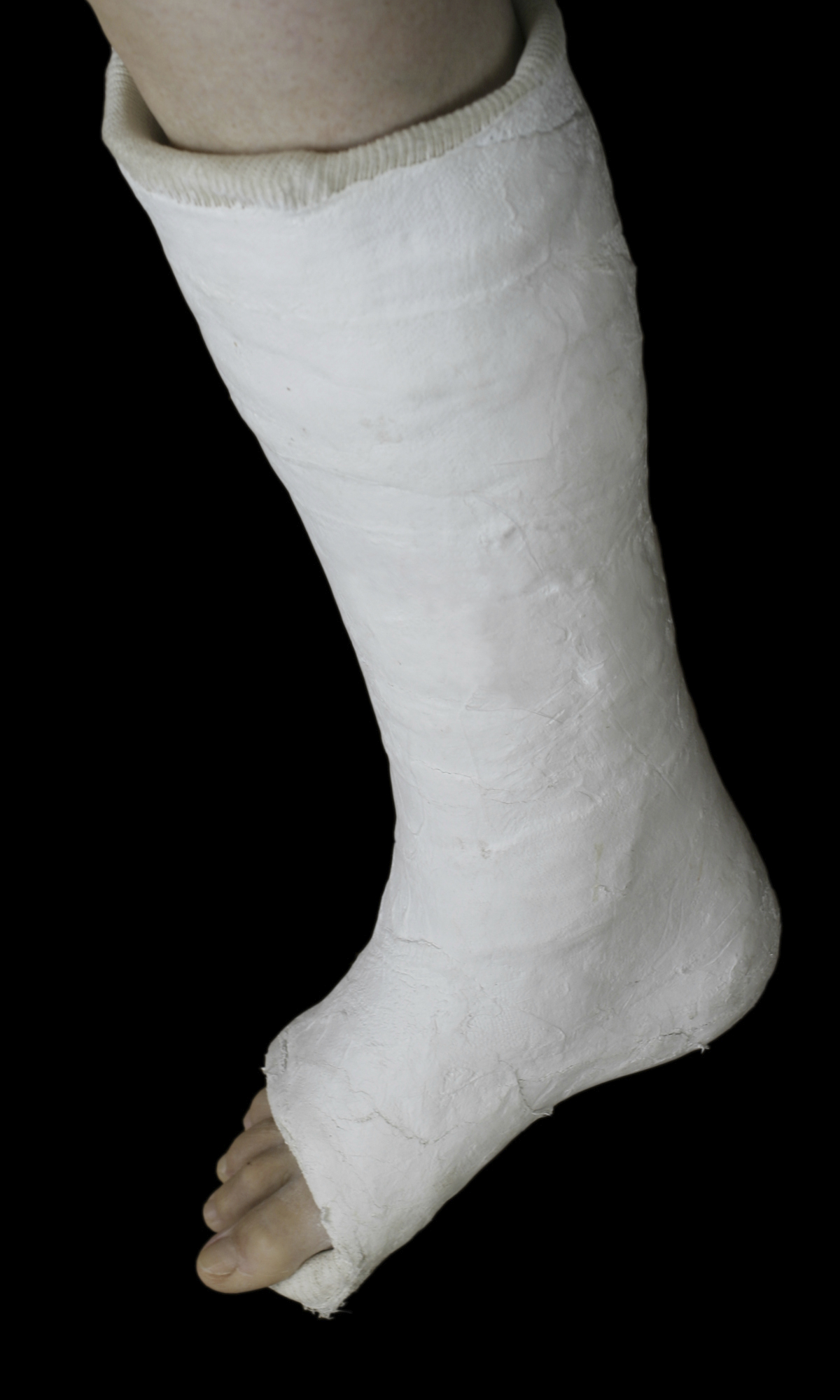 The pain and discomfort may be overwhelming if you experience a broken ankle. Research has shown that treatment needs to be started as quickly as possible and this may extend for a period of six to twelve weeks. There are specific symptoms that are associated with a broken ankle, including swelling and bruising, the inability to stand or walk on your foot, and the ankle appearing deformed if the bone is dislocated. An effective diagnosis is typically achieved by having an X-ray performed to determine the severity of the fracture. If the break is not severe, the patient may be fitted with a protective boot or a plaster cast in addition to using crutches, which are designed to keep the weight off the ankle. For more severe fractures, the bone may have to be realigned through manual manipulation or surgery, which may require wires and screws to be inserted into your foot. Please consult with a podiatrist if you feel you have broken your ankle to determine the proper treatment options.
The pain and discomfort may be overwhelming if you experience a broken ankle. Research has shown that treatment needs to be started as quickly as possible and this may extend for a period of six to twelve weeks. There are specific symptoms that are associated with a broken ankle, including swelling and bruising, the inability to stand or walk on your foot, and the ankle appearing deformed if the bone is dislocated. An effective diagnosis is typically achieved by having an X-ray performed to determine the severity of the fracture. If the break is not severe, the patient may be fitted with a protective boot or a plaster cast in addition to using crutches, which are designed to keep the weight off the ankle. For more severe fractures, the bone may have to be realigned through manual manipulation or surgery, which may require wires and screws to be inserted into your foot. Please consult with a podiatrist if you feel you have broken your ankle to determine the proper treatment options.
Broken ankles need immediate treatment. If you are seeking treatment, contact Dr. David K. Lee from Arches Foot Institute. Our doctor can provide the care you need to keep you pain-free and on your feet.
Broken Ankles
A broken ankle is experienced when a person fractures their tibia or fibula in the lower leg and ankle area. Both of these bones are attached at the bottom of the leg and combine to form what we know to be our ankle.
When a physician is referring to a break of the ankle, he or she is usually referring to a break in the area where the tibia and fibula are joined to create our ankle joint. Ankles are more prone to fractures because the ankle is an area that suffers a lot of pressure and stress. There are some obvious signs when a person experiences a fractured ankle, and the following symptoms may be present.
Symptoms of a Fractured Ankle
- Excessive pain when the area is touched or when any pressure is placed on the ankle
- Swelling around the area
- Bruising of the area
- Area appears to be deformed
If you suspect an ankle fracture, it is recommended to seek treatment as soon as possible. The sooner you have your podiatrist diagnose the fracture, the quicker you’ll be on the way towards recovery.
If you have any questions, please feel free to contact our office located in Surprise, AZ. We offer the newest diagnostic and treatment technologies for all your foot care needs.
Read more about All About Broken AnklesHow To Help Ease Foot Pain While Standing for Most of the Day
 Recent research has shown there may be negative consequences of standing on your feet for the majority of the day. The topic of biomechanics may be of importance, and this encompasses the amount of body weight the feet must endure in relation to how it’s shifted. Many people who stand most of the day have a tendency to lock the ankles, thinking it provides additional stability. Unfortunately, this action may negatively affect the joints, ligaments, tendons, and muscles that are located in the feet. There are several ways to improve the general well-being of the feet, which may include being aware of how your body weight is distributed. When the majority of the weight falls on the front of the foot, the muscles can adapt more successfully, and this may help to alleviate any aches that can be associated with standing on your feet. Additionally, rotating the ankles several times per day may aid in eliminating unnecessary foot pain.
Recent research has shown there may be negative consequences of standing on your feet for the majority of the day. The topic of biomechanics may be of importance, and this encompasses the amount of body weight the feet must endure in relation to how it’s shifted. Many people who stand most of the day have a tendency to lock the ankles, thinking it provides additional stability. Unfortunately, this action may negatively affect the joints, ligaments, tendons, and muscles that are located in the feet. There are several ways to improve the general well-being of the feet, which may include being aware of how your body weight is distributed. When the majority of the weight falls on the front of the foot, the muscles can adapt more successfully, and this may help to alleviate any aches that can be associated with standing on your feet. Additionally, rotating the ankles several times per day may aid in eliminating unnecessary foot pain.
While working on the feet, it is important to take the proper care of them. For more information about working on your feet, contact Dr. David K. Lee from Arches Foot Institute. Our doctor will treat your foot and ankle needs.
Working on Your Feet
Standing on your feet for long periods of time can cause stress and pain in your feet. Your whole body may experience change in terms of posture, back pain, bunions, callouses and or plantar warts. There are ways to avoid these conditions with proper foot care, smart choices and correct posture.
Positive Changes
Negative heeled shoe – Choosing this shoe type places the heel slightly lower than the ball of the foot. These are great for overall foot health. Find shoes that fit you correctly.
Go barefoot – Our feet were not designed to be enclosed for all hours of the day. Try to periodically expose your feet to air.
Eliminate Pain
Foot Exercises – Performing simple exercises, incorporating yoga and doing stretches are beneficial. This will allow increased blood flow to the area and muscles of the foot.
Achilles tendon – Stretching the foot out flat on the floor will relax the calf muscles and tendon. These exercises can be performed almost anywhere. Make sure you add these exercises to your daily regimen.
With a little bit of this information and knowing more about foot health, you will notice changes. Foot stretches and proper footwear will help with pain and prevent further issues.
If you have any questions please feel free to contact our office located in Surprise, AZ. We offer the newest diagnostic and treatment technologies for all your foot and ankle needs.
Read more about Working on Your FeetIs a Plantar Wart Painful?
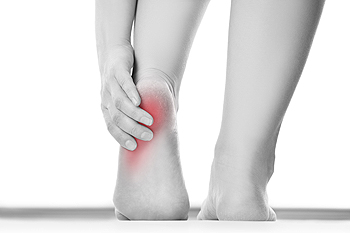 If you’ve ever had a plantar wart, you are most likely aware of the intense pain and tenderness that is typically experienced while walking. It is known to be caused by the human papillomavirus, which is also referred to as HPV. This particular type of virus typically affects the heel of the foot, and will grow inward as a result of the pressure the heel endures from everyday activities such as walking. The appearance can be a small area with thickened skin and may sometimes have black dots in the center. Treatment options may include utilizing liquid nitrogen that will freeze the wart off, salicylic acid cream, which may be used to burn the wart off, or specific medicine that is applied directly to the wart. It’s important to have a podiatrist properly diagnose your plantar wart to determine what the best course of treatment is for you.
If you’ve ever had a plantar wart, you are most likely aware of the intense pain and tenderness that is typically experienced while walking. It is known to be caused by the human papillomavirus, which is also referred to as HPV. This particular type of virus typically affects the heel of the foot, and will grow inward as a result of the pressure the heel endures from everyday activities such as walking. The appearance can be a small area with thickened skin and may sometimes have black dots in the center. Treatment options may include utilizing liquid nitrogen that will freeze the wart off, salicylic acid cream, which may be used to burn the wart off, or specific medicine that is applied directly to the wart. It’s important to have a podiatrist properly diagnose your plantar wart to determine what the best course of treatment is for you.
Plantar warts can be very uncomfortable. If you need your feet checked, contact Dr. David K. Lee from Arches Foot Institute. Our doctor will assist you with all of your foot and ankle needs.
About Plantar Warts
Plantar warts are the result of HPV, or human papillomavirus, getting into open wounds on the feet. They are mostly found on the heels or balls of the feet.
While plantar warts are generally harmless, those experiencing excessive pain or those suffering from diabetes or a compromised immune system require immediate medical care. Plantar warts are easily diagnosed, usually through scraping off a bit of rough skin or by getting a biopsy.
Symptoms
- Lesions on the bottom of your feet, usually rough and grainy
- Hard or thick callused spots
- Wart seeds, which are small clotted blood vessels that look like little black spots
- Pain, discomfort, or tenderness of your feet when walking or standing
Treatment
- Freezing
- Electric tool removal
- Laser Treatment
- Topical Creams (prescription only)
- Over-the-counter medications
To help prevent developing plantar warts, avoid walking barefoot over abrasive surfaces that can cause cuts or wounds for HPV to get into. Avoiding direct contact with other warts, as well as not picking or rubbing existing warts, can help prevent the further spread of plantar warts. However, if you think you have developed plantar warts, speak to your podiatrist. He or she can diagnose the warts on your feet and recommend the appropriate treatment options.
If you have any questions please feel free to contact our office located in Surprise, AZ. We offer the newest diagnostic and treatment technologies for all your foot and ankle needs.
Read more about All About Plantar WartsWhat are the Benefits of Exercising the Feet?
 When the muscles, tendons, and ligaments in the feet are strong, many foot conditions may possibly be avoided. These may include a common ailment referred to as plantar fasciitis, in addition to Achilles tendon injuries. Both of these conditions may cause pain and stiffness in the heel of the foot, which may often produce severe discomfort. An effective foot stretch can be performed by rolling the bottom of the foot over a foot roller or by using a frozen bottle of water. Rolling the foot back and forth about 10 times, may possibly alleviate achy feet. When the calf muscle is properly stretched, the Achilles tendon may typically gain the strength it needs to prevent painful injuries from occurring. This may be achieved by propping the ball of the foot against a wall, while the heel is on the ground. When a gentle stretch in the calf is felt by leaning into the wall, hold for 15 seconds, then repeat on the other foot. A consultation with a podiatrist is suggested to learn more about how exercises can help the feet.
When the muscles, tendons, and ligaments in the feet are strong, many foot conditions may possibly be avoided. These may include a common ailment referred to as plantar fasciitis, in addition to Achilles tendon injuries. Both of these conditions may cause pain and stiffness in the heel of the foot, which may often produce severe discomfort. An effective foot stretch can be performed by rolling the bottom of the foot over a foot roller or by using a frozen bottle of water. Rolling the foot back and forth about 10 times, may possibly alleviate achy feet. When the calf muscle is properly stretched, the Achilles tendon may typically gain the strength it needs to prevent painful injuries from occurring. This may be achieved by propping the ball of the foot against a wall, while the heel is on the ground. When a gentle stretch in the calf is felt by leaning into the wall, hold for 15 seconds, then repeat on the other foot. A consultation with a podiatrist is suggested to learn more about how exercises can help the feet.
Exercising your feet regularly with the proper foot wear is a great way to prevent injuries and build strength. If you have any concerns about your feet, contact Dr. David K. Lee from Arches Foot Institute. Our doctor can provide the care you need to keep you pain-free and on your feet.
Exercise for Your Feet
Exercise for your feet can help you gain strength, mobility and flexibility in your feet. They say that strengthening your feet can be just as rewarding as strengthening another part of the body. Your feet are very important, and we often forget about them in our daily tasks. But it is because of our feet that are we able to get going and do what we need to. For those of us fortunate enough to not have any foot problems, it is an important gesture to take care of them to ensure good health in the long run.
Some foot health exercises can include ankle pumps, tip-toeing, toe rises, lifting off the floor doing reps and sets, and flexing the toes. It is best to speak with Our doctor to determine an appropriate regimen for your needs. Everyone’s needs and bodies are different, and the activities required to maintain strength in the feet vary from individual to individual.
Once you get into a routine of doing regular exercise, you may notice a difference in your feet and how strong they may become.
If you have any questions please feel free to contact our office located in Surprise, AZ. We offer the newest diagnostic and treatment technologies for all your foot and ankle needs.
Read more about Exercise for Your FeetCan Wearing High Heels Cause Hammertoe?
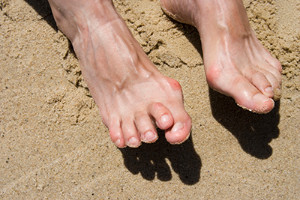 Hammertoe may often be the result of a muscle imbalance in the toes. It is typically a painful and uncomfortable foot condition and is generally caused by wearing poorly fitting shoes or an inherited trait. If high heels are frequently worn, the toes may be crammed into an area that may be too small for the toes to move about in. When this happens, the toes may be forced into a flexed position for long periods of a time. If this condition is not treated promptly, they may permanently remain in a bent position, which may require surgery to repair. Additionally, a toe that has been stubbed or broken may be a cause of hammertoe. Other foot conditions such as corns and calluses may develop on top of the toes as a result of hammertoe. If you feel you have hammertoe, it is strongly suggested to speak to a podiatrist who can suggest proper techniques for a successful treatment.
Hammertoe may often be the result of a muscle imbalance in the toes. It is typically a painful and uncomfortable foot condition and is generally caused by wearing poorly fitting shoes or an inherited trait. If high heels are frequently worn, the toes may be crammed into an area that may be too small for the toes to move about in. When this happens, the toes may be forced into a flexed position for long periods of a time. If this condition is not treated promptly, they may permanently remain in a bent position, which may require surgery to repair. Additionally, a toe that has been stubbed or broken may be a cause of hammertoe. Other foot conditions such as corns and calluses may develop on top of the toes as a result of hammertoe. If you feel you have hammertoe, it is strongly suggested to speak to a podiatrist who can suggest proper techniques for a successful treatment.
Hammertoe
Hammertoes can be a painful condition to live with. For more information, contact Dr. David K. Lee from Arches Foot Institute. Our doctor will answer any of your foot- and ankle-related questions.
Hammertoe is a foot deformity that affects the joints of the second, third, fourth, or fifth toes of your feet. It is a painful foot condition in which these toes curl and arch up, which can often lead to pain when wearing footwear.
Symptoms
- Pain in the affected toes
- Development of corns or calluses due to friction
- Inflammation
- Redness
- Contracture of the toes
Causes
Genetics – People who are genetically predisposed to hammertoe are often more susceptible
Arthritis – Because arthritis affects the joints in your toes, further deformities stemming from arthritis can occur
Trauma – Direct trauma to the toes could potentially lead to hammertoe
Ill-fitting shoes – Undue pressure on the front of the toes from ill-fitting shoes can potentially lead to the development of hammertoe
Treatment
Orthotics – Custom made inserts can be used to help relieve pressure placed on the toes and therefore relieve some of the pain associated with it
Medications – Oral medications such as anti-inflammatories or NSAIDs could be used to treat the pain and inflammation hammertoes causes. Injections of corticosteroids are also sometimes used
Surgery – In more severe cases where the hammertoes have become more rigid, foot surgery is a potential option
If you have any questions please contact our office located in Surprise, AZ. We offer the newest diagnostic and treatment technologies for all your foot and ankle needs.
Read more about What Are Hammertoes?Simple Ways to Properly Take Care of Your Feet
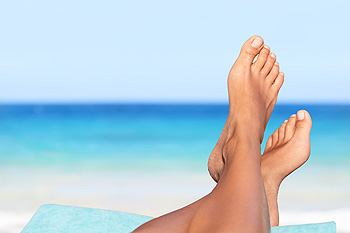 The feet are taken for granted by many people who may not be aware of simple steps that can be performed that may yield maximum benefits. When shoes fit properly with enough room for the toes to move about in, the feet will feel comfortable for the majority of the day. Washing the feet daily followed by utilizing a good moisturizer will help the skin to feel smooth, and may prevent a foot condition that is known as cracked heels. It’s imperative to properly trim the toenails, which is done by trimming straight across the nail, as this may prevent ingrown toenails from developing. Research has shown that when shoes are purchased, it’s beneficial to try them on in the middle of the day when the feet are at their largest. Additionally, the importance of changing your socks daily may eliminate certain foot odors. If you would like additional information on how to properly care for your feet, please consult with a podiatrist.
The feet are taken for granted by many people who may not be aware of simple steps that can be performed that may yield maximum benefits. When shoes fit properly with enough room for the toes to move about in, the feet will feel comfortable for the majority of the day. Washing the feet daily followed by utilizing a good moisturizer will help the skin to feel smooth, and may prevent a foot condition that is known as cracked heels. It’s imperative to properly trim the toenails, which is done by trimming straight across the nail, as this may prevent ingrown toenails from developing. Research has shown that when shoes are purchased, it’s beneficial to try them on in the middle of the day when the feet are at their largest. Additionally, the importance of changing your socks daily may eliminate certain foot odors. If you would like additional information on how to properly care for your feet, please consult with a podiatrist.
Proper foot care is something many older adults forget to consider. If you have any concerns about your feet and ankles, contact Dr. David K. Lee from Arches Foot Institute. Our doctor can provide the care you need to keep you pain-free and on your feet.
The Elderly and Their Feet
As we age we start to notice many changes in our body, but the elder population may not notice them right away. Medical conditions may prevent the elderly to take notice of their foot health right away. Poor vision is a lead contributor to not taking action for the elderly.
Common Conditions
- Neuropathy – can reduce feeling in the feet and can hide many life-threatening medical conditions.
- Reduced flexibility – prevents the ability of proper toenail trimming, and foot cleaning. If left untreated, it may lead to further medical issues.
- Foot sores – amongst the older population can be serious before they are discovered. Some of the problematic conditions they may face are:
- Gouging toenails affecting nearby toe
- Shoes that don’t fit properly
- Pressure sores
- Loss of circulation in legs & feet
- Edema & swelling of feet and ankles
Susceptible Infections
Diabetes and poor circulation can cause general loss of sensitivity over the years, turning a simple cut into a serious issue.
If you have any questions please feel free to contact our office located in Surprise, AZ. We offer the newest diagnostic and treatment technologies for all your foot and ankle needs.
Read more about Elderly and their Feet
(623) 328-8577
Arches Foot Institute
18731 N. Reems Road, Suite 640
Surprise, AZ 85374
© Arches Foot Institute | Cosmetic Foot Surgery | David Lee, DPM
Surprise Podiatrist | Surprise Podiatry | Surprise Foot Doctor

